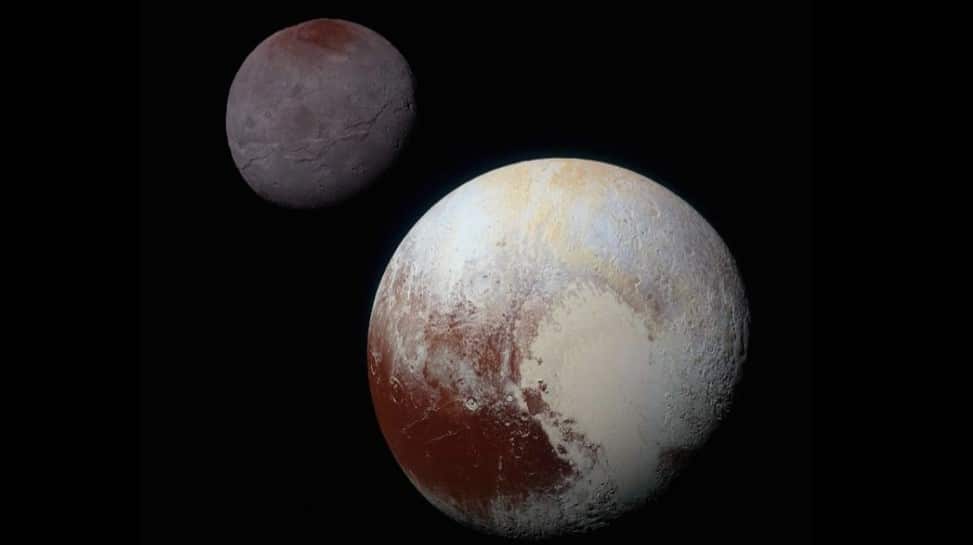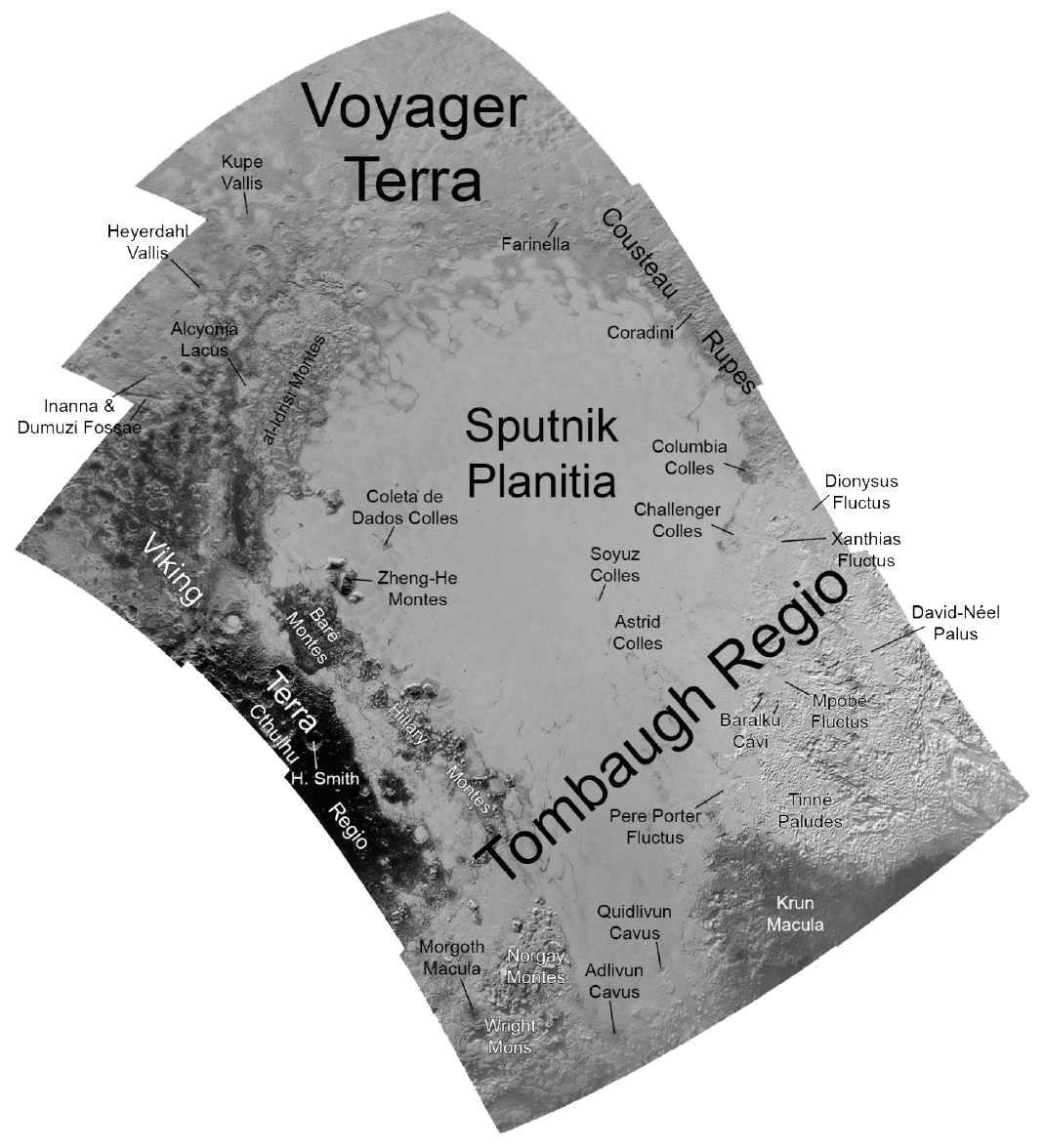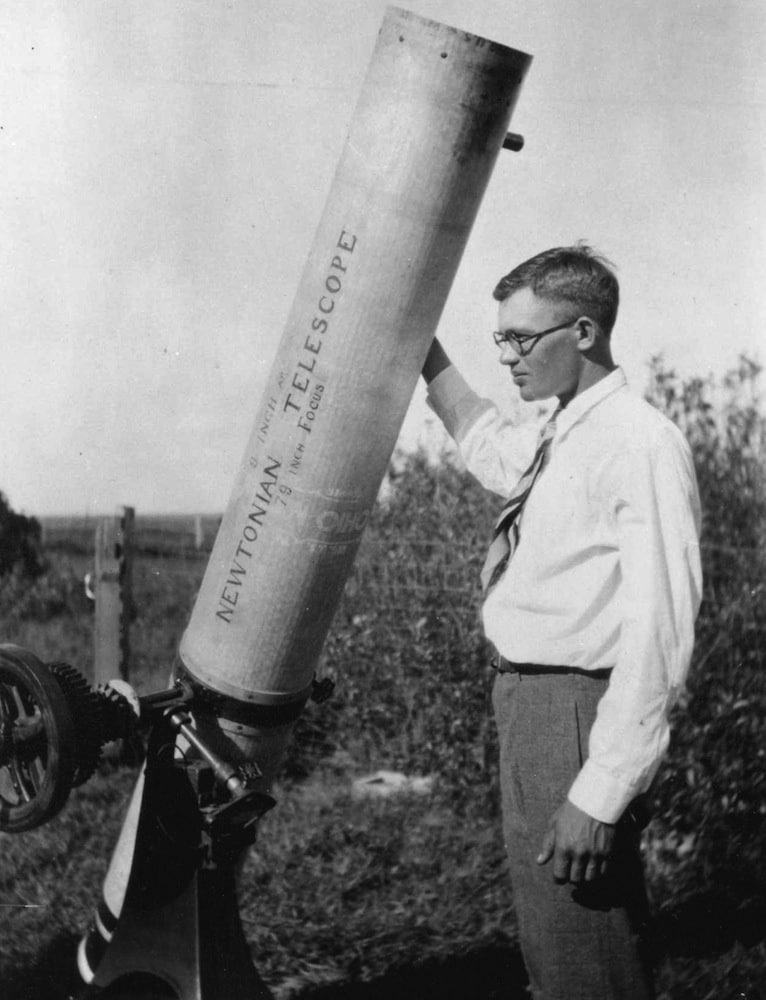We’ve been searching for you for years. We’ve had 25 years of speculation and wonder. It all started when Percival Lowell spotted something in 1905; He called it Planet X. He believed that another planet existed and was out there beyond Uranus and Neptune!
Lowell would not live to see Planet X in his lifetime. However, he pointed us in the right direction and told us where to look. By February of 1930, a self-taught 24-year-old astronomer named Clyde Tombaugh had you pinpointed. It took a year of very time-consuming work. It was the result of hour after hour staring at night sky photos. From the Lowell Observatory in Flagstaff, Arizona, he announced to the world a new planet. We named you Pluto and embraced you as the ninth one in our solar system.
`Some 75 years later, we’ve had second thoughts about our relationship. We’ve seen that your small planet is not all we’d hoped for. You’re not a “stand-alone,” but one of many in a place called the Kuiper belt, a debris ring of celestial bodies just outside of Neptune’s orbit.
In 2006, rules were made and a vote was taken. You did not follow all the rules for planet existence and got demoted to a dwarf planet. Pluto, you were devalued! Robbed of your title! You are now considered a lesser version, just one of many small celestial bodies spinning out there in space.
Where are you now, and what are you doing? Dwarf planet Pluto is located some 3.301 billion miles from Earth. You’re orbiting our sun in an unusual pattern that is both elliptical and tilted. You rotate on your side as you take a rather long time going around the sun. You are not always an equal distance away, and your journey takes 248 Earth years! We’ve also discovered that, at times, you are the 8th planet in line, not the 9th. For 20 years of your 248-year orbit, you, Pluto, are closer to the sun than planet Neptune is.
For a long time, your size was only a guess. We first thought Pluto was the size of the planet Mercury. For a time, we imagined you almost as big as Earth. We finally learned in the 1970s that you’re actually about two-thirds the size of our moon.
You are a cold, cold place! Pluto’s surface is a mixture of frozen nitrogen, methane, and carbon monoxide ice and averages a temperature of -379 degrees Fahrenheit. On a balmy day, the temperature can rise to -350 degrees on Pluto! The dwarf planet moves so slowly that a day there equals 6.4 Earth days. Pluto is so far away from the sun that it receives no more illumination from it than we receive from our moon. The sun appears like a pinprick of light in the distance.
Pluto’s surface is a mix of ice sheets, mountains, and valleys. There may be an inner mantle of ice or perhaps a water ocean below its crust. We just don’t know. But we do know that Pluto’s outer makeup is a terrain like no other. It includes slushy volcano-like mounds, ice mountains, hundreds of sand-like dunes, and vast flat areas of ice that resemble our glaciers. However, Pluto’s glaciers melt upward as their nitrogen water rises. On Earth, water pools downward as our ice glaciers melt.
In 1978, we discovered a moon orbiting Pluto. By 2013, we knew it had five moons. We named the first and largest one Charon, after the ferryman to the underworld (Hades) in Greek mythology. Pluto itself is named after the ruler of the Greek underworld. Pluto is the god who presides over the afterlife. The name was submitted by eleven-year-old schoolgirl Venetia Phair from Epson, England. She was awarded a five-pound note after her entry was chosen above all others.
How do we know what Pluto looks like up close? In January 2006, we sent a probe called New Horizons to discover more about the dwarf planet. The spacecraft, about the size of a piano, took nine years to reach Pluto. Thank goodness there were other planets, comets, and things to see along the way! New Horizons was the first craft to send back photos of the elusive and mysterious dwarf planet Pluto. It came close enough to allow for several months’ worth of study and pictures. On July 14, 2015, it made its closest flyby, coming within 7,800 miles of Pluto. The photos sent back were both astounding and amazing! And New Horizons is not done. It has the capability to spend several more decades out in space. It was in hibernation mode to save on fuel and resumed activity on March 1, 2023, in the Kuiper belt.
One unique feature shown by New Horizons is Pluto’s million-mile-square nitrogen glacier. It was possibly formed years ago by a direct impact, creating a smooth basin-type section next to a raised rough one. It’s clearly visible and stands out in stark contrast against other areas, which show up red and pink. This large white spot below the equator takes on the shape of an enormous heart.
This 620-mile “heart” has two distinct sides. One side, the left ventricle, is more of a smooth basin. It has no craters and is considered to be still young, developing, and active. It has been named Sputnik Planitia after Earth’s first artificial satellite. The right side, or right ventricle, appears older. It has an uplifted terrain full of scraggly ice mountains. Pluto’s heart-shaped region is called the Tombaugh Regio, named after the planet’s discoverer. This region controls the atmosphere and climate.
In daytime sunlight, the glacier’s thinnest layer of ice turns to vapor. At night it freezes back again. Each time it does so, it creates nitrogen winds up to 20 mph blowing across the surface. They blow backward against Pluto’s rotating current and sculpt the landscape as they go. They control the temperature. Thaw. Freeze. Repeat. Thaw. Freeze. Repeat. Each sequence of thawing and freezing pumps the winds along. Their pulsating motion resembles that of a beating heart.
I feel for you, Pluto. You’re no longer our ninth planet in the solar system. You’ve been removed from classroom maps and corrected on textbook pages. Upset school children have written letters regarding your demotion and tried to change minds. Many have felt a kinship with your tiny lonely planet.
Adults have joined in, too, perhaps wanting to hold onto the only planet that joined our solar system in their lifetime. (Neptune was the next previous planet, officially discovered in 1846 by a Frenchman). For me, born in 1952, there’s always been Pluto. It also has the distinction as the only planet discovered by an American. And children are fond of Pluto. They like having a planet that perhaps inspired the name of a Disney cartoon character. Mickey Mouse’s dog was first introduced in 1930 and was unnamed. Within a year, he was called Pluto.
But the demotion has stuck. Pluto follows two planet criteria. However, that’s not good enough. It falls short because it’s not alone in the neighborhood of its orbit. It’s too close to Neptune. And since the early 2000s, we’ve discovered additional dwarf planets in the Kuiper belt and even further in deep space. They are similar to Pluto’s size and have been given names such as Quaoar, Sedna, and Eris.
Yet, there is something magical about you, Pluto. You possess something that other celestial bodies don’t have. You can lay claim to something very special. Something unique. You’re the only one of them I know with a beating heart!
Rules for a Planet – as declared by the International Astronomical Union (IAU)
In order to be a planet, a celestial body must:
1) Rotate around the sun directly
2) Have sufficient mass to assume a near-round shape
3) Clear its neighborhood of any objects of similar size near its orbit





